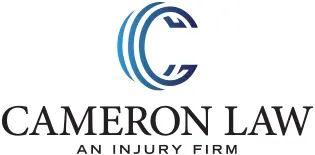The Dangers of Lane Change Accidents

One day you are driving on the road, just going straight, without any intersections, lights, or stop signs. And then it happens: you get into an accident. How did that happen? It probably happened from a lane change or lane departure accident, which is actually more complex than you may at first think.
More Dangerous Than You Think
Lane change accidents are a curious contradiction.
On the one hand, they should be safer. Unlike intersection accidents, where one car usually slams into another car going a slower speed, and in the opposite direction, with a lane change accident, both cars are going about the same speed, and in the same direction, which would seem to provide some level of safety (or at least, minimize the chances of an accident).
But lane change accidents can actually be more dangerous. This is due to the fact that in most lane change accidents, cars are both going at a very high rate of speed—it is that excessive speed which can make lane change accidents such a high risk.
When a car is going that fast, it is hard for tires to keep traction on the road when the car impacts, even slightly, with another car. A car that is even just “clipped” in a lane change accident, can end up in opposite lanes of traffic, or off the roadway completely.
Only Slight Mistakes
Lane change accidents also don’t take much error to happen. When someone runs a red light or gets behind the wheel drunk, that isn’t a “minor” event. But someone can cause a lane change accident just by veering a few feet, or even a few inches off course and they can be sober, and paying attention, even when they do that.
Lane change accidents can be caused by the slightest thing, such as lane lines that have faded, or construction that causes confusing lane thoroughfares.
Overcorrection Dangerous
Lane change accidents also have a double danger: the first is, of course, the departure of the vehicle into the adjacent lane.
But there is actually a second danger in lane change accidents: the correction. Often, when people feel their cars veering into an adjacent lane (or they feel the impact of hitting a car in an adjacent lane), the natural human reaction is to completely and suddenly push the car in the opposite direction. That can lead to overcorrection, where now, the car is veering too far in the opposite adjacent lane.
Who is Liable?
Proving lane change accidents can be difficult, as property damage on the vehicles doesn’t often tell the whole story of who hit (or veered into) who. Often, the use of eyewitnesses is necessary. In some cases, nearby security or surveillance cameras are needed, and even vehicles with electronic data recorders can be used to show how fast a car was going, and what the car was doing at the time of the lane change accident.
If you were injured in a lane change or lane departure accident, call us for help today and for a free consultation. Contact the personal injury lawyers at Cameron Law today at 702-745-4545.
Sources:
mycardoeswhat.org/deeper-learning/lane-departure-warning/
consumerreports.org/car-safety/lane-departure-warning-lane-keeping-assist-guide-a7087080070/


